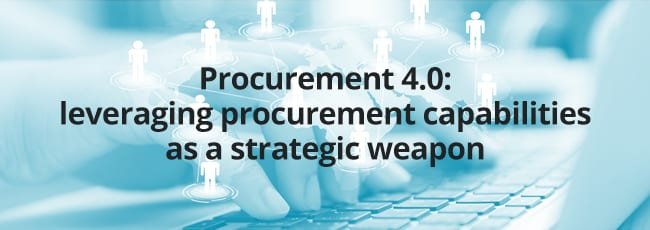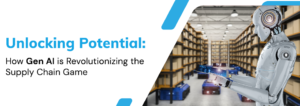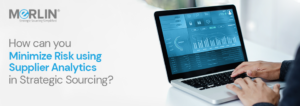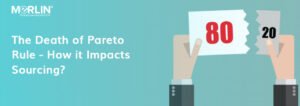Industry 4.0 is commonly referred to as the fourth industrial revolution. A revolution defined by new trends in automation and data exchange in manufacturing technologies. But what makes this revolution different is the radical change brought about by the use of cyber-physical systems to monitor, analyze, and automate businesses.
So where does Procurement fit in? Procurement 4.0 leverages certain aspects of Industry 4.0, namely, Big Data, System integration, Cloud computing, and Cybersecurity. Unsurprisingly, data analytics forms a key part of Procurement 4.0. Thus far, Data analysis has been focused upon learning lessons from the past. That said, innovative procurement data utilization will be the way forward as it perceives the future through predictive analytics.
According to McKinsey, disruptive technologies increase the value of digital information along the product life cycle. So how does this impact procurement?

The procurement division, as the primary owner of the supplier interface, can increase its distinctive value proposition within the company by seizing new opportunities. By automating how data is collected, not only will companies change what they buy as they incorporate Industry 4.0, but importantly, they will also change the ways in which they buy using data analytics. The recently emerged Procurement 4.0 adopts innovative ways to digitalize the supply chains and unlocks new growth opportunities.
Lean Procurement 4.0

Procurement 4.0 walks away from just being an approach to streamline and automate procure-to-pay (P2P) activities and instead brings a lean management perspective to procurement. Procurement responsibilities now extend to market research, vendor evaluation, and integration. In manufacturing, lean techniques help reduce inventory wastage. Similarly, with procurement, it is easier to integrate suppliers onto a platform that standardizes assessment and selection and enables a streamlined purchasing structure. This enables greater reliability and flexibility and more agile procurement and production processes. The Chartered Institute of Procurement and Supply describes Lean procurement as a supplier having one point of contact across a buying organization, one contract and offers one price for all locations.
According to Fraunhofer IML, Procurement 4.0 imposes new requirements on purchasing. Smart contracts, Predictive analytics, and Big Data will change the face of purchasing. Operational purchasing will be automated and procurement in itself will receive a promotion towards monitoring, controlling, and steering.
Similarly, PwC’s Procurement 4.0 Value proposition utilizes big data tools and techniques to connect with suppliers and improve the planning, sourcing, supplier collaboration, and risk management process. This automates the supply chain by lowering costs and ensuring faster delivery.
Not surprisingly, Procurement 4.0 encompasses all the above descriptions.
Collaborative Innovation
What not to do.

Collaborative innovation between suppliers, customers, and competitors is a defining element for Procurement 4.0. To establish a strong competitive position in this complex new ecosystem, procurement should be able to define commercial relationships, rules of engagement, and bring the right partners to the table.
Unilever’s ‘Partner to Win’ program is a good example of an innovative supplier collaboration program. Creating an efficient Supplier list of its top 200 suppliers, Unilever defined the ‘Partner to Win’ program around 5 key pillars, innovation, sustainability, service, value, and capacity. Instead of it being an on one relationship with suppliers, Unilever created a platform for Suppliers to work together to establish a sense of transparency on defined roles, product specifications, quantity, quality, etc.
The second change was to bring in Lean principles which allowed Unilever to remove cost as the value decider and instead focus on creating long term value. Unilever worked alongside suppliers to help them improve in areas where the company can buy better, and understand what the business can do to help them with manufacturing. Unilever was able to reduce wastage within its procurement department and managed to establish a mutually profitable and sustainable relationship with its suppliers.
Key Enabler for Procurement 4.0

Digital procurement processes like digital requests for quotations, supplier financial analysis, procurement risk analysis, e-signatures and verification, and digital procurement network collaboration will help organizations move towards Procurement 4.0. However, investing in new digital tools is not the final solution. The tools provide the data required to make strategic decisions. But the problem will be in finding the solution within the data.
As mentioned in the beginning, Data analytics is probably the most important enabler for Procurement 4.0. This will help procurement unlock the real value of large amounts of structured and unstructured data and improve enterprise-wide performance. Companies will gain a competitive advantage because predictive information will provide alerts as to where and when to expect the next failure or success.
Analytics will provide internal data sources, such as spend data, contract data, and data related to supplier relationship management, together with external data sources, such as supplier databases, and provide information anytime and anywhere about supplier markets.
Digitalization will further increase globalization and Procurement 4.0 will require procurement to be located in the most competitive supply markets. Procurement will now go beyond reducing costs and improving efficiencies and focus on building value and profits. The introduction of Procurement 4.0 will include new value propositions, new business requirements, and integrating data across the value chains. There is now a need to use intelligent data when introducing digital processes and tools.
A product like MeRLIN embraces the key aspects of Procurement 4.0. The solution seamlessly ensures system integration which is probably the biggest game-changer for procurement as inefficient handling of large amounts of data has haunted the industry for many years and tighter integration across enterprise systems assists decision making, scenario analysis, and predictions and ensures faster & more accurate data exchange assisted by significantly increased automation.
The solution also integrates sourcing & procurement automation with supplier relationship management and planning functions augmented by advanced analytics, hosted either on-premise or cloud, and can be delivered through Web and Mobile platforms.
The role of procurement going forward will include the management of a “value network”, which is defined as sets of connections between organizations and individuals who act in a manner beneficial to the entire group. The concept of value networks will result in an increased push towards the purchases of services. Simply, the focus of the organization is not only to purchase at the least cost. Rather it is to benefit from the functions of purchasing whilst endeavoring to achieve the best value possible.
One must point out that research on Procurement 4.0 is still in its infancy. Researches endeavor to explore the concept further so as to completely ascertain the influence of Industry 4.0 on Procurement and fill in the grey area between Procurement 4.0 and eProcurement. Even if technology plays a central role in the transformation of procurement, organizations should only consider it as an enabler or a means and not as an end. This will also require a change of perspective, mindset, and culture in the procurement community.






